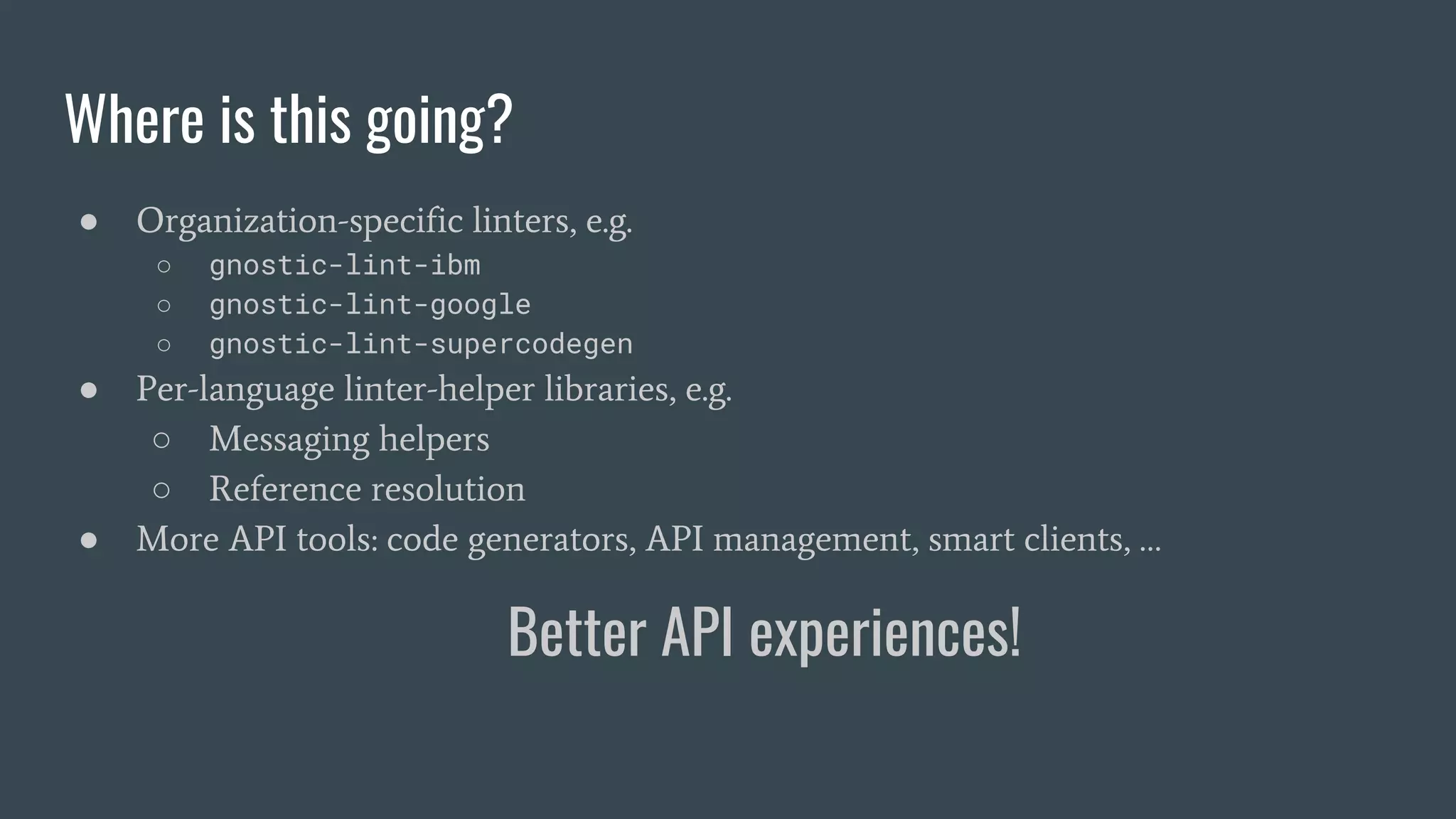The document discusses the importance of enforcing API design rules and utilizing openAPI tooling for high-quality code generation. It highlights various design guidelines from companies like Google, Microsoft, and IBM, and suggests the implementation of configurable and extensible linters for API compliance. Additionally, it explores the potential of using Protocol Buffers for API data serialization and outlines future directions for API tools and organization-specific linters.



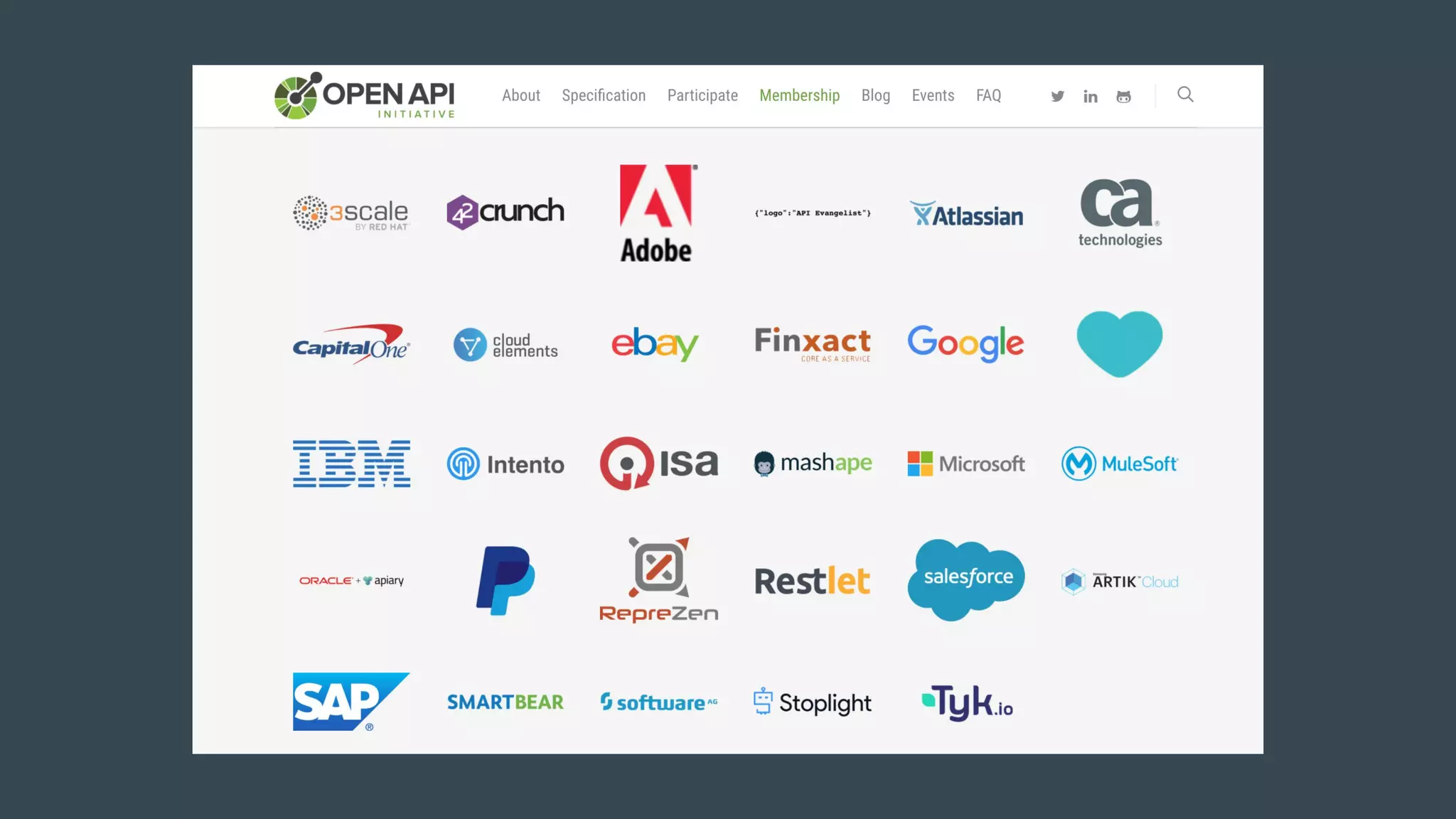
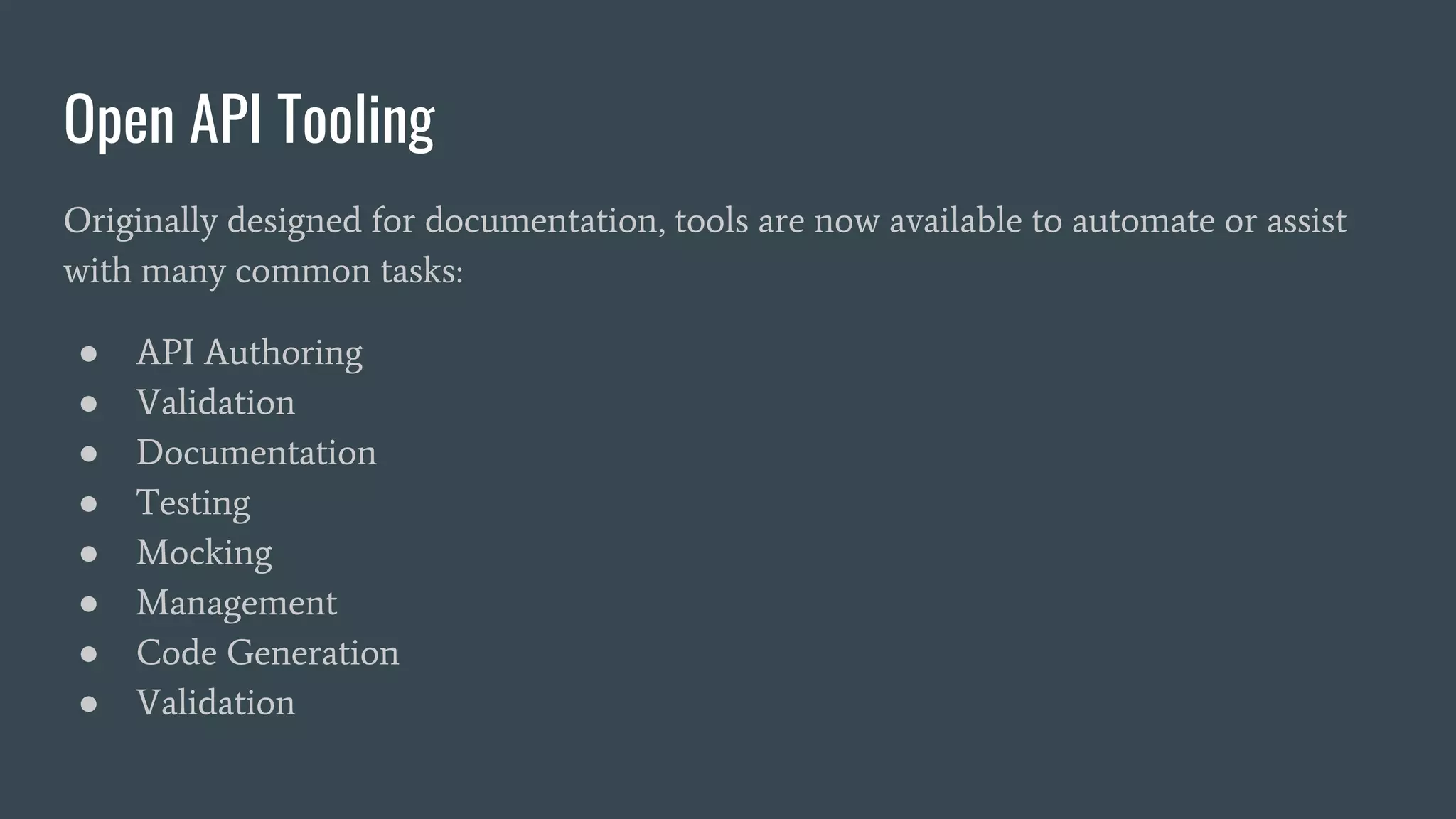
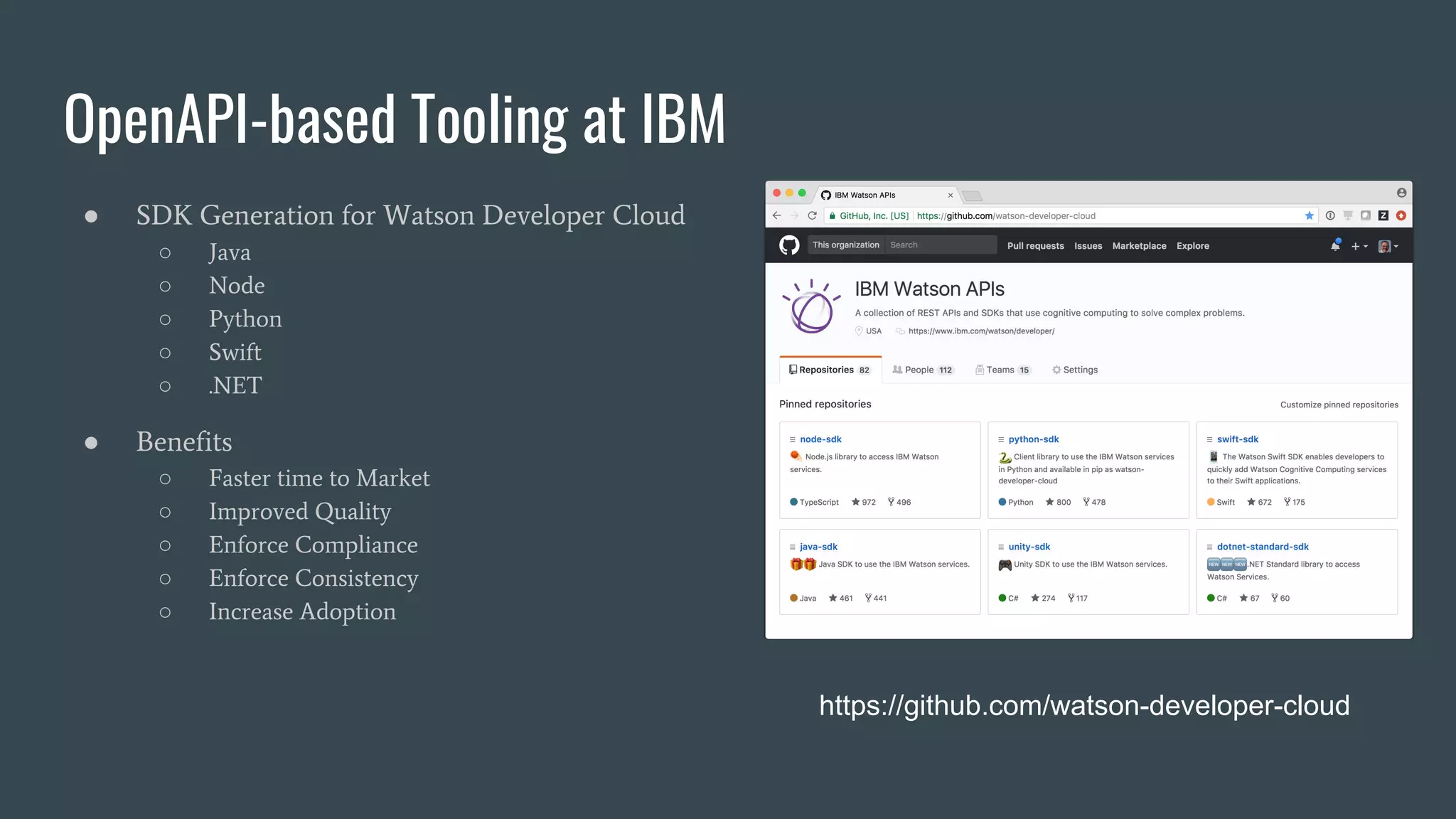
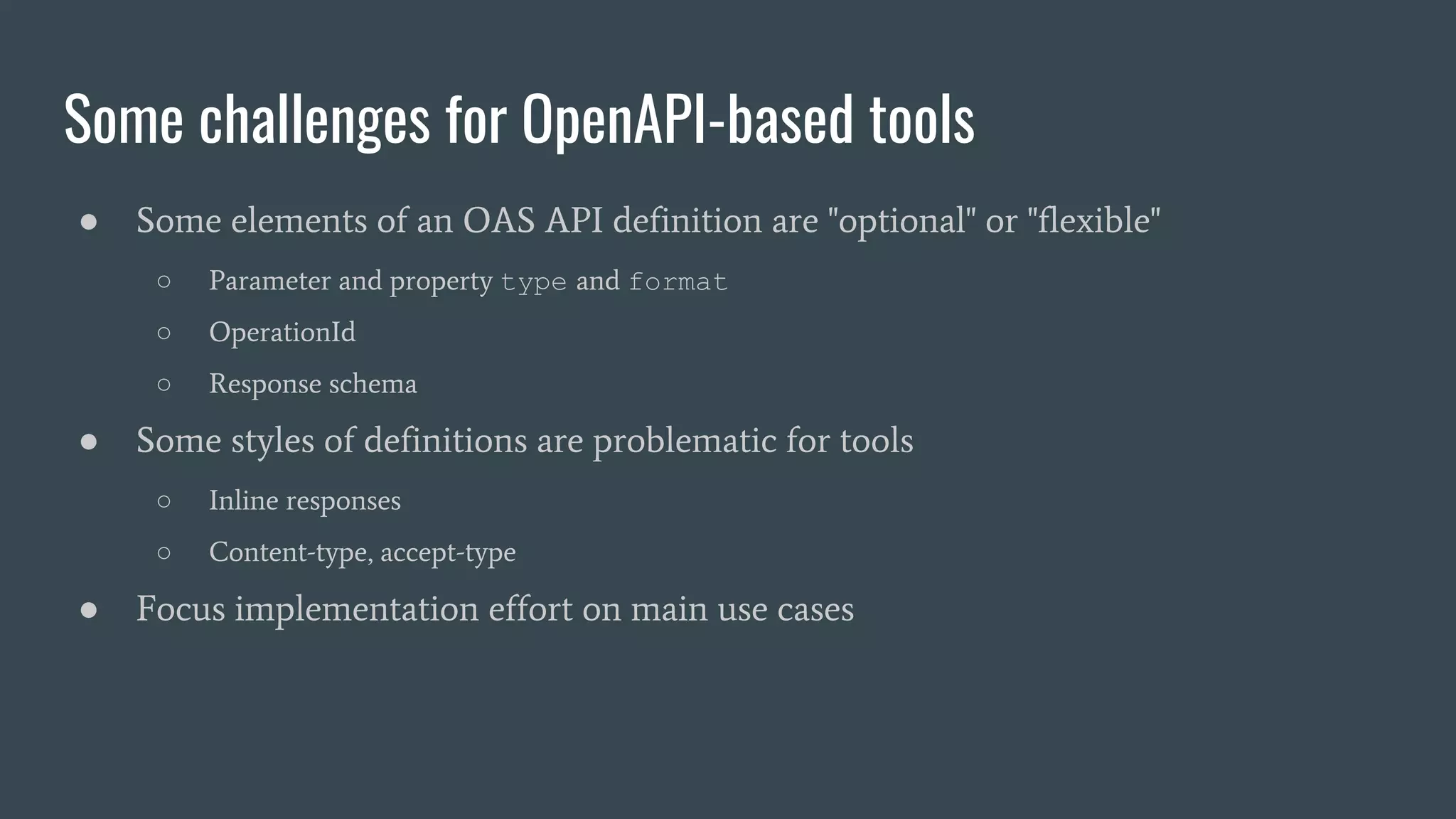
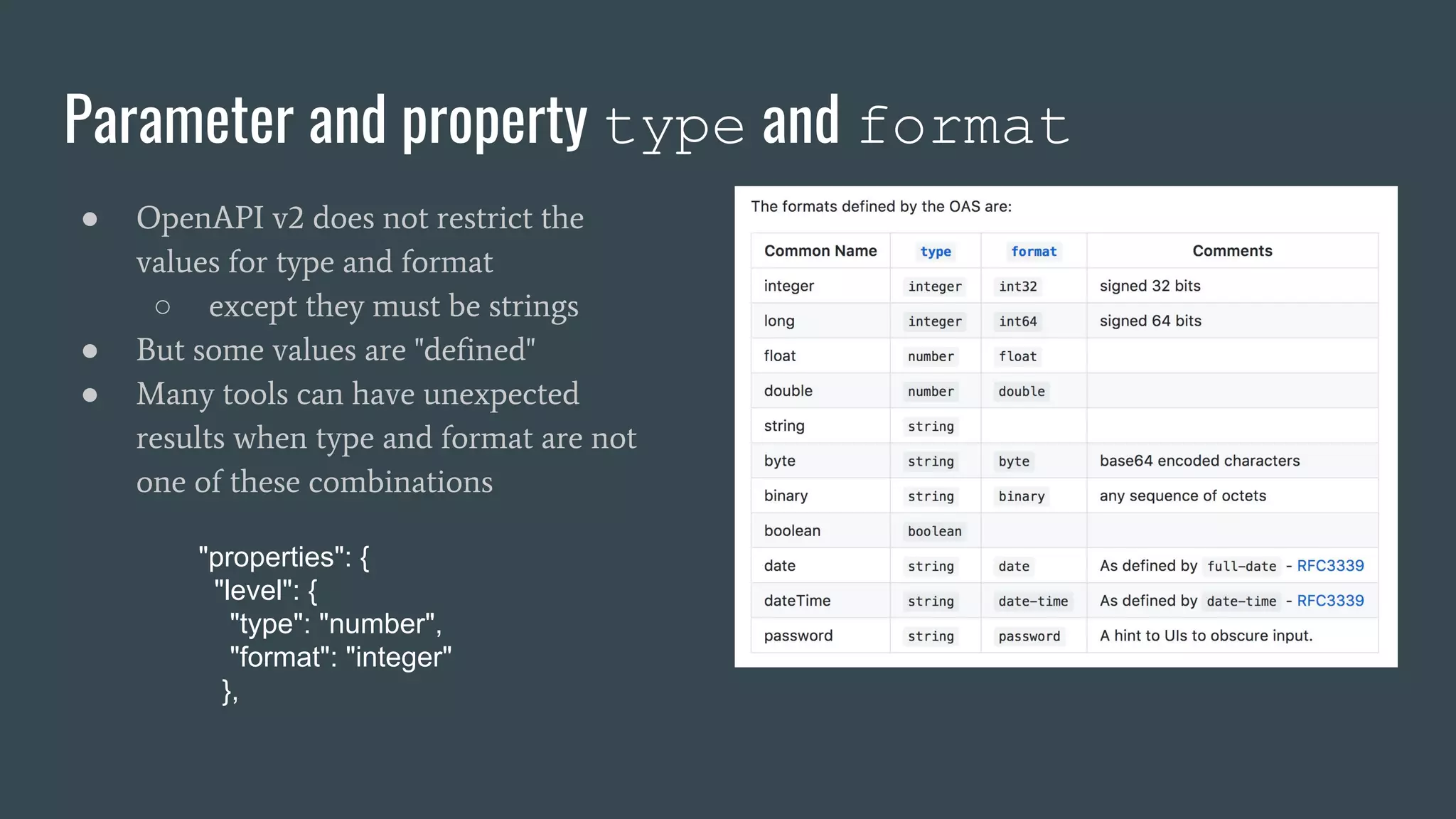
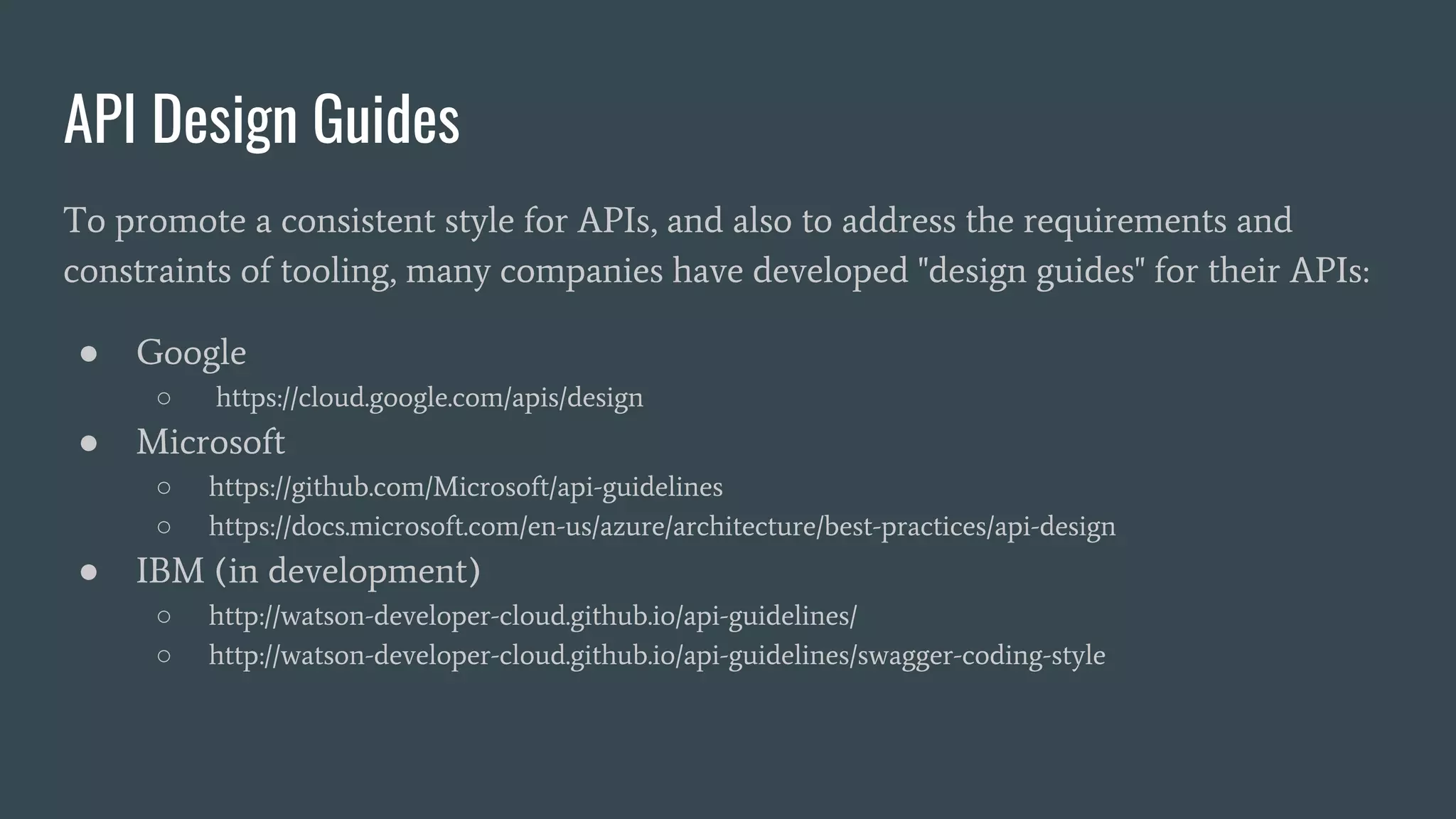
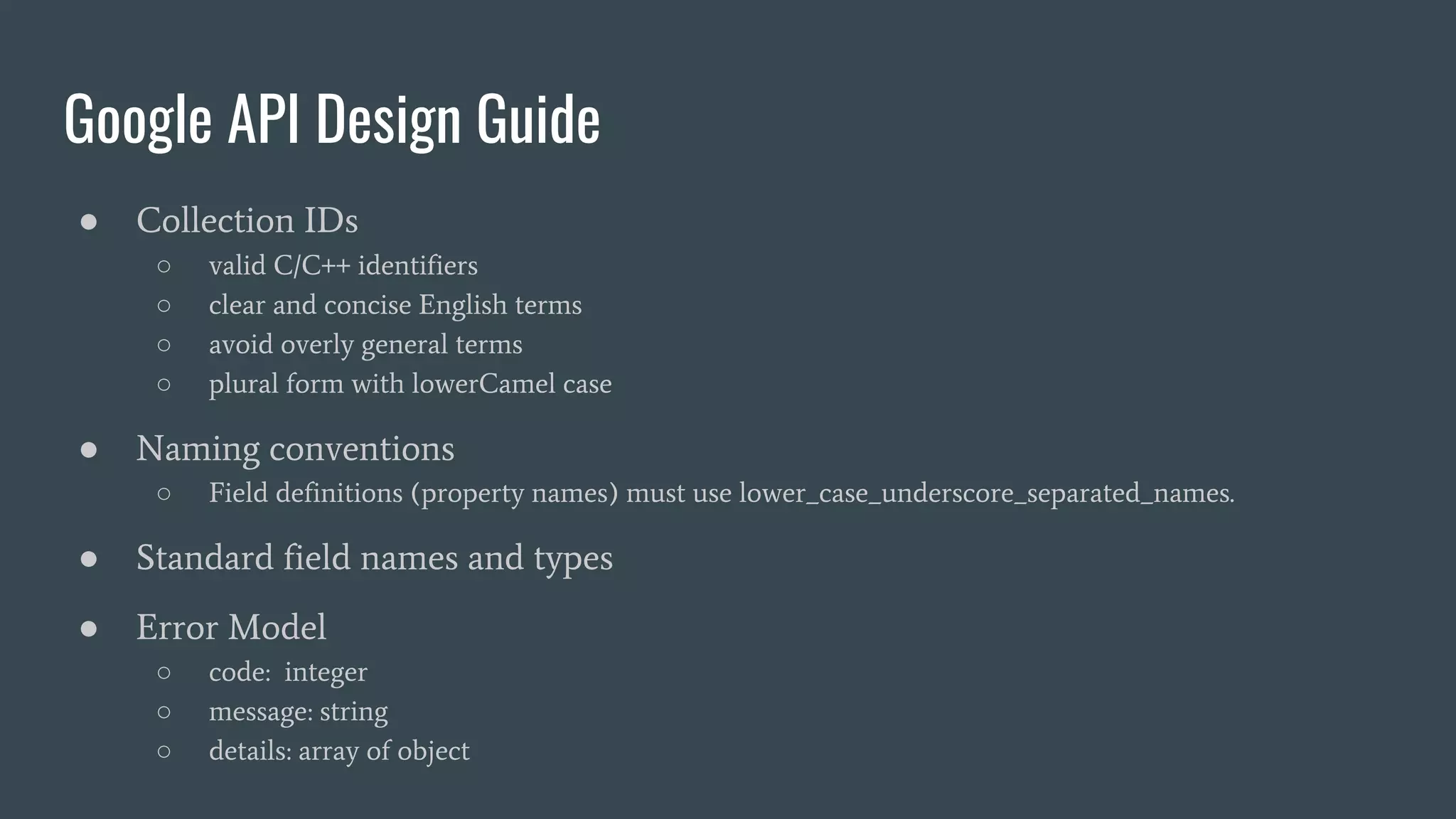

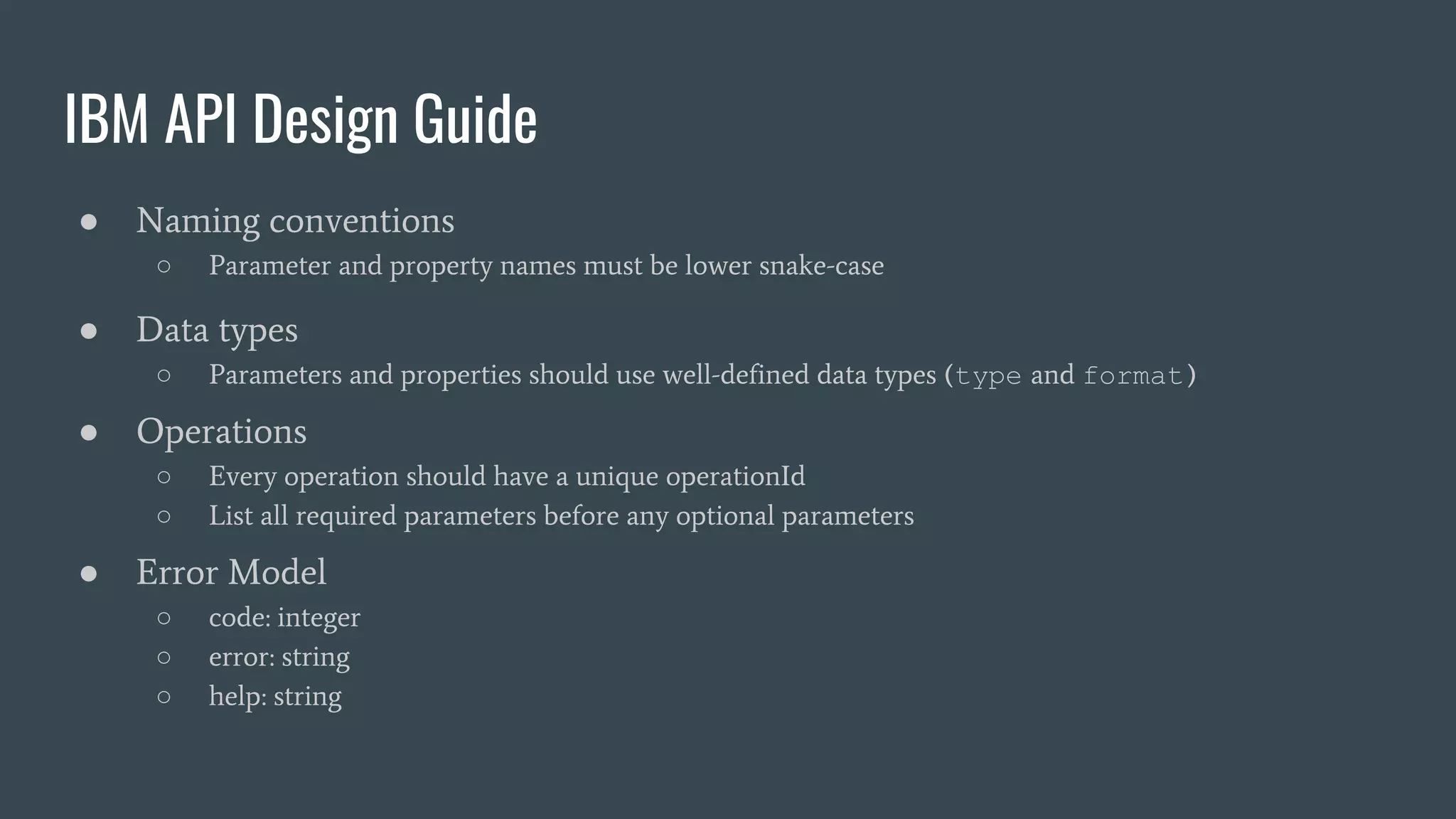
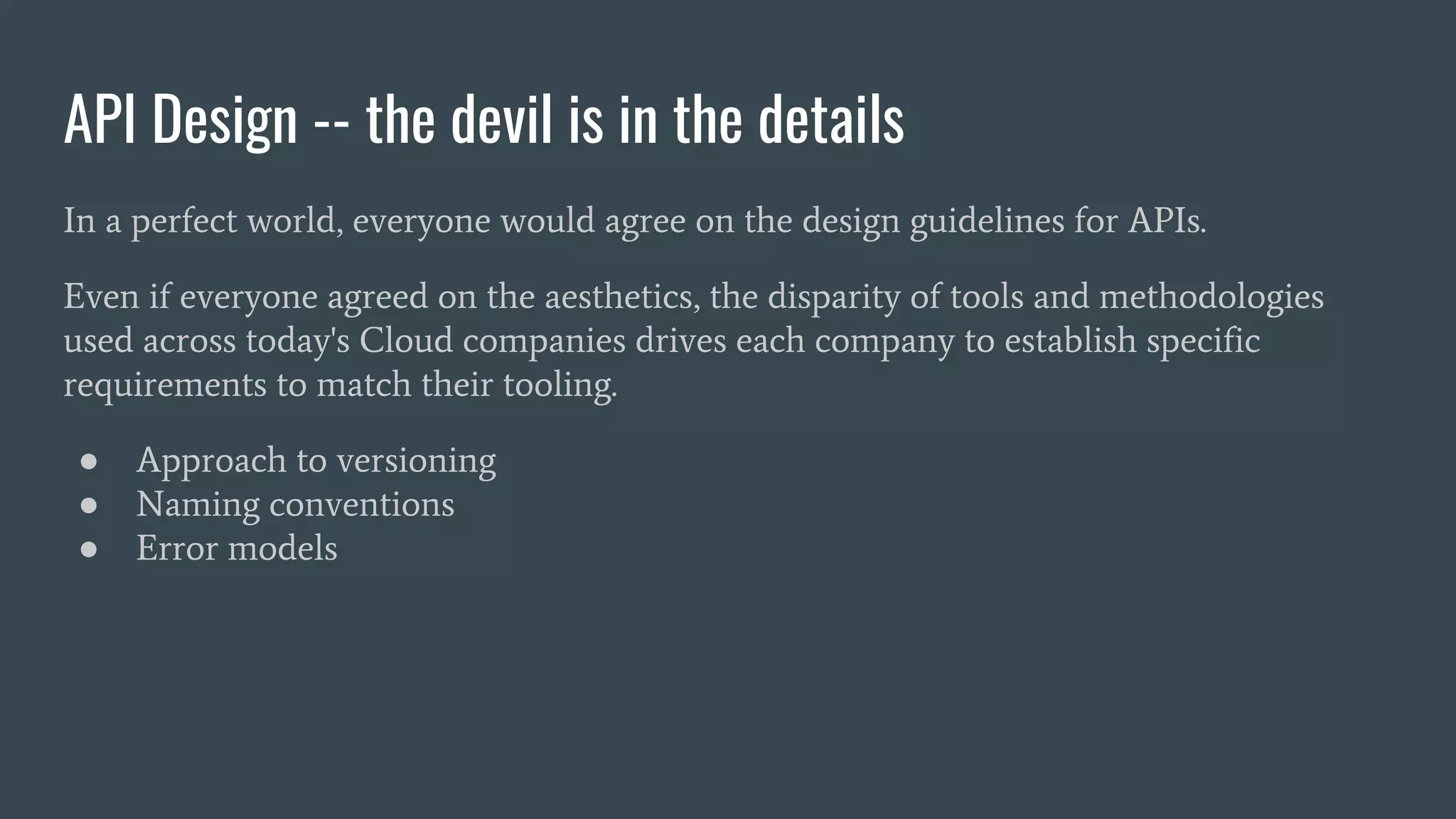

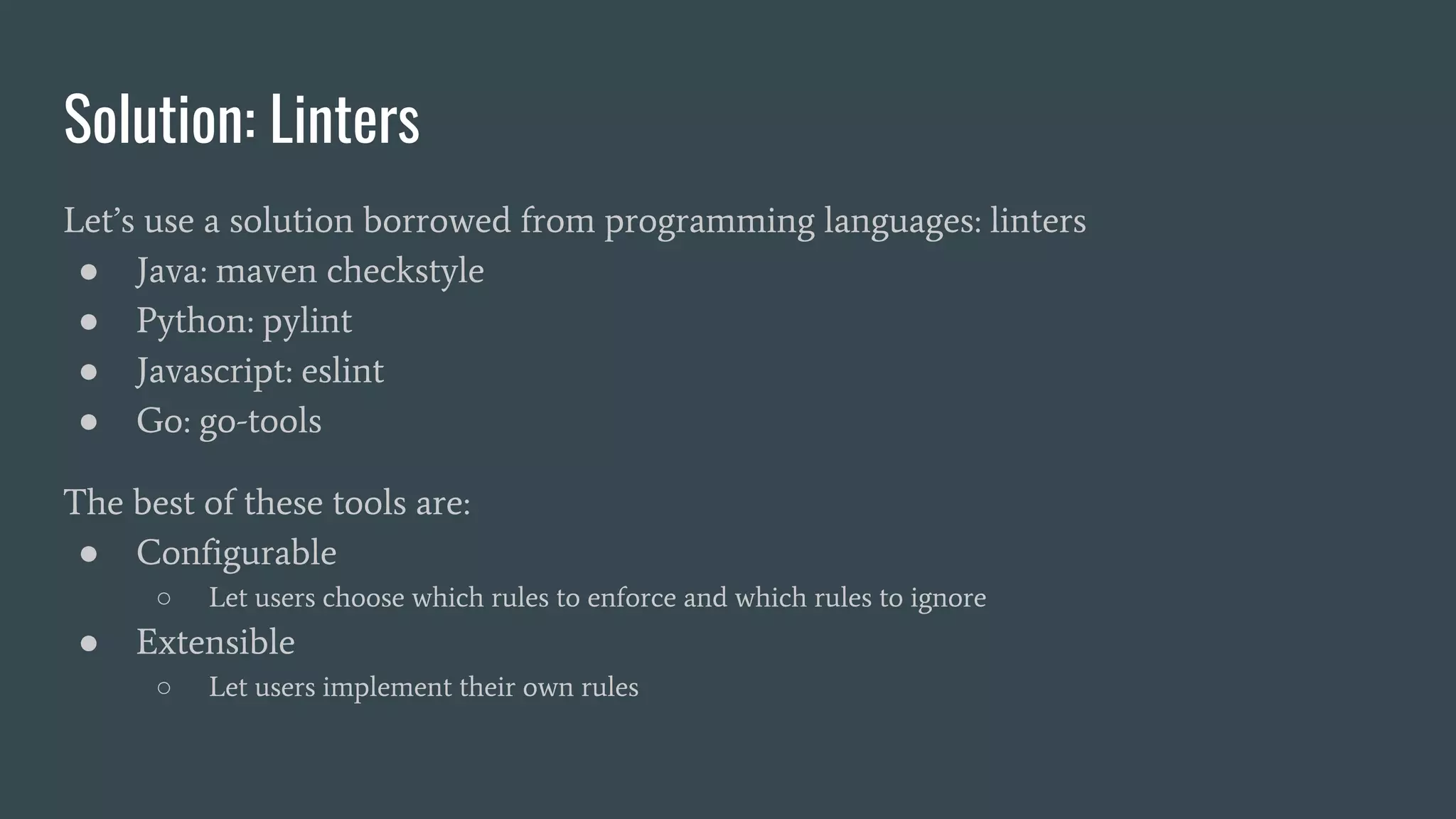
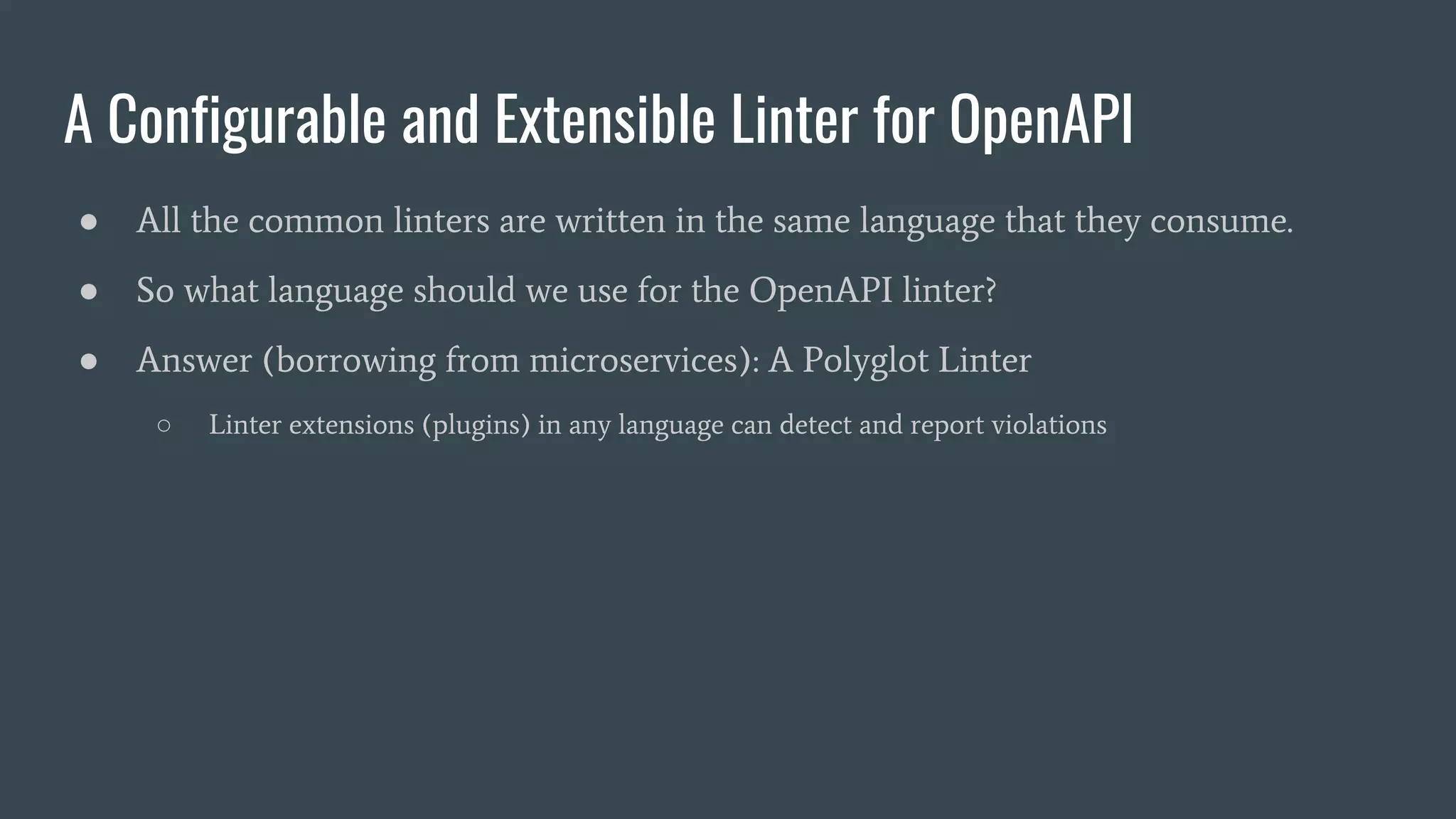

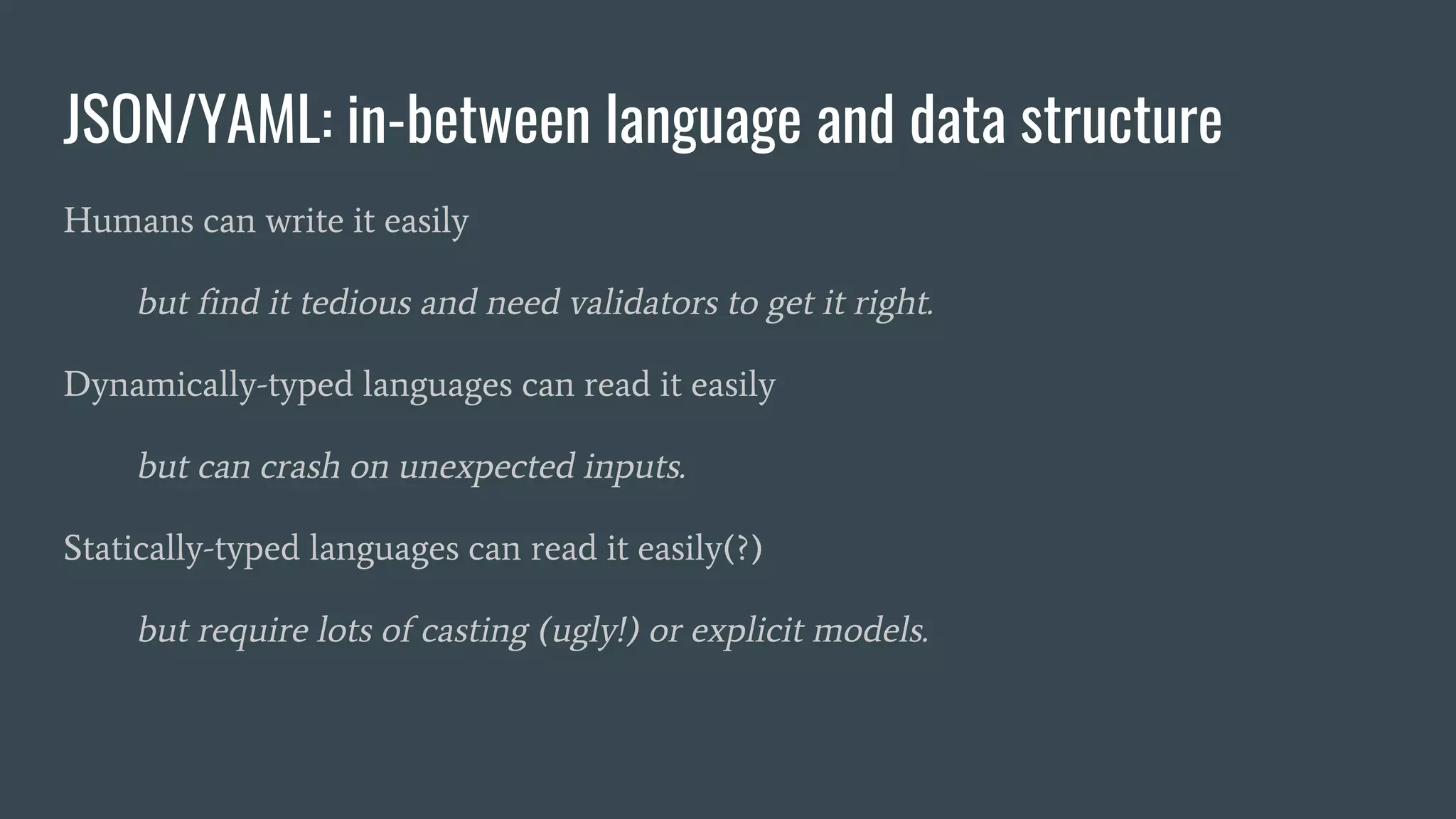
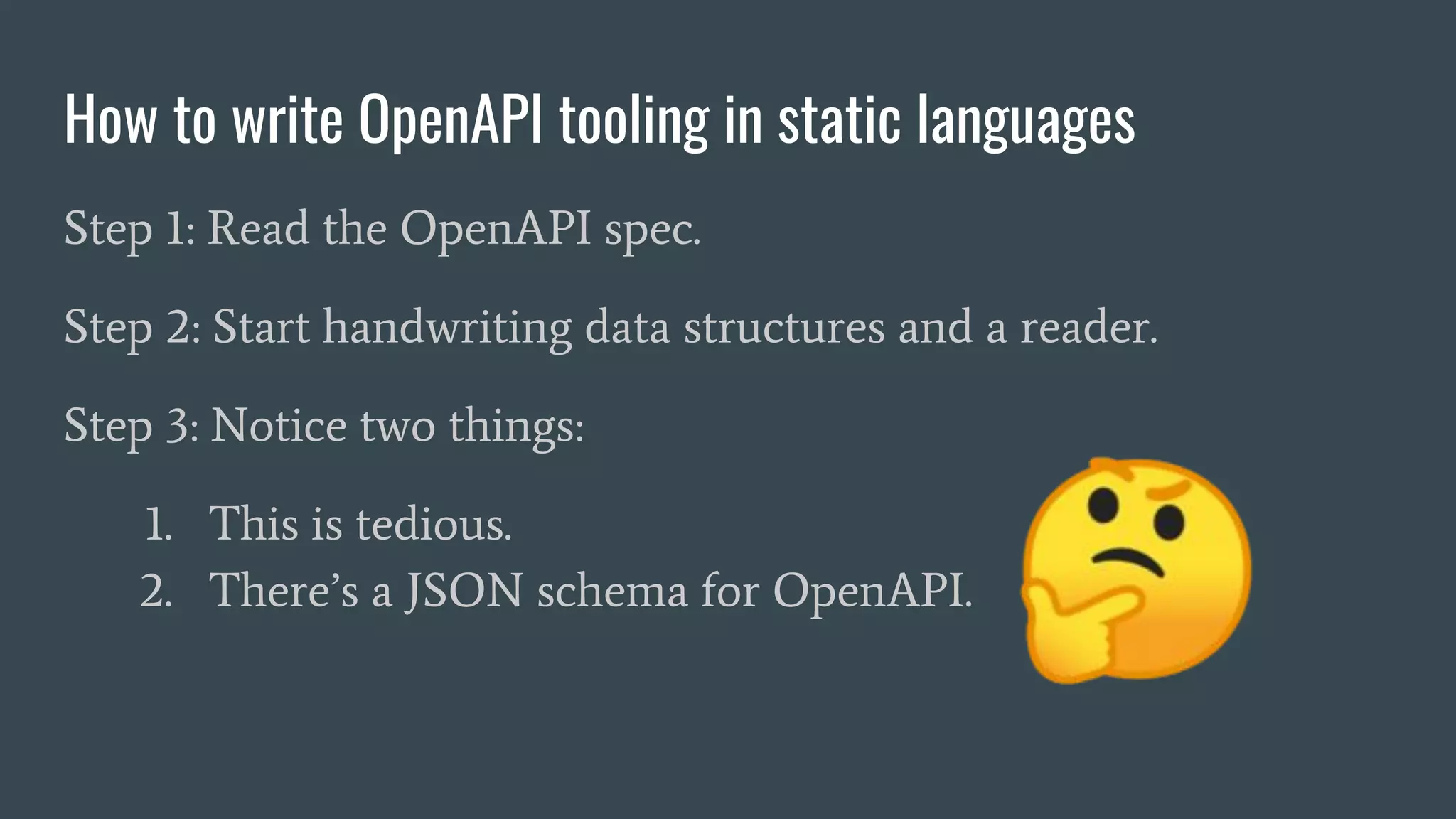
![The OpenAPI JSON Schema { "title": "Schema for Swagger 2.0 API.", "id": "http://swagger.io/v2/schema.json#", "type": "object", "required": [ "swagger", "info", "paths" ], "additionalProperties": false, "patternProperties": { "^x-": { "$ref": "#/definitions/vendorExtension" } }, "properties": { "swagger": { "type": "string", "enum": [ "2.0" ], "description": "The version of this document." }, "info": { "$ref": "#/definitions/info" }, "host": { "type": "string", "pattern": "^[^{}/ :]+(?::d+)?$", "description": "The host of the API.'" }, "definitions": { "info": { "type": "object", "description": "General information”, "required": [ "version", "title" ], "additionalProperties": false, "patternProperties": { "^x-": { "$ref": "#/definitions/vendorExtension" } }, "properties": { "title": { "type": "string", "description": "A unique and precise title." }, "version": { "type": "string", "description": "A semantic version number." },](https://image.slidesharecdn.com/index2018-02221030-enforcingapidesignrules-180226020748/75/Enforcing-API-Design-Rules-for-High-Quality-Code-Generation-20-2048.jpg)

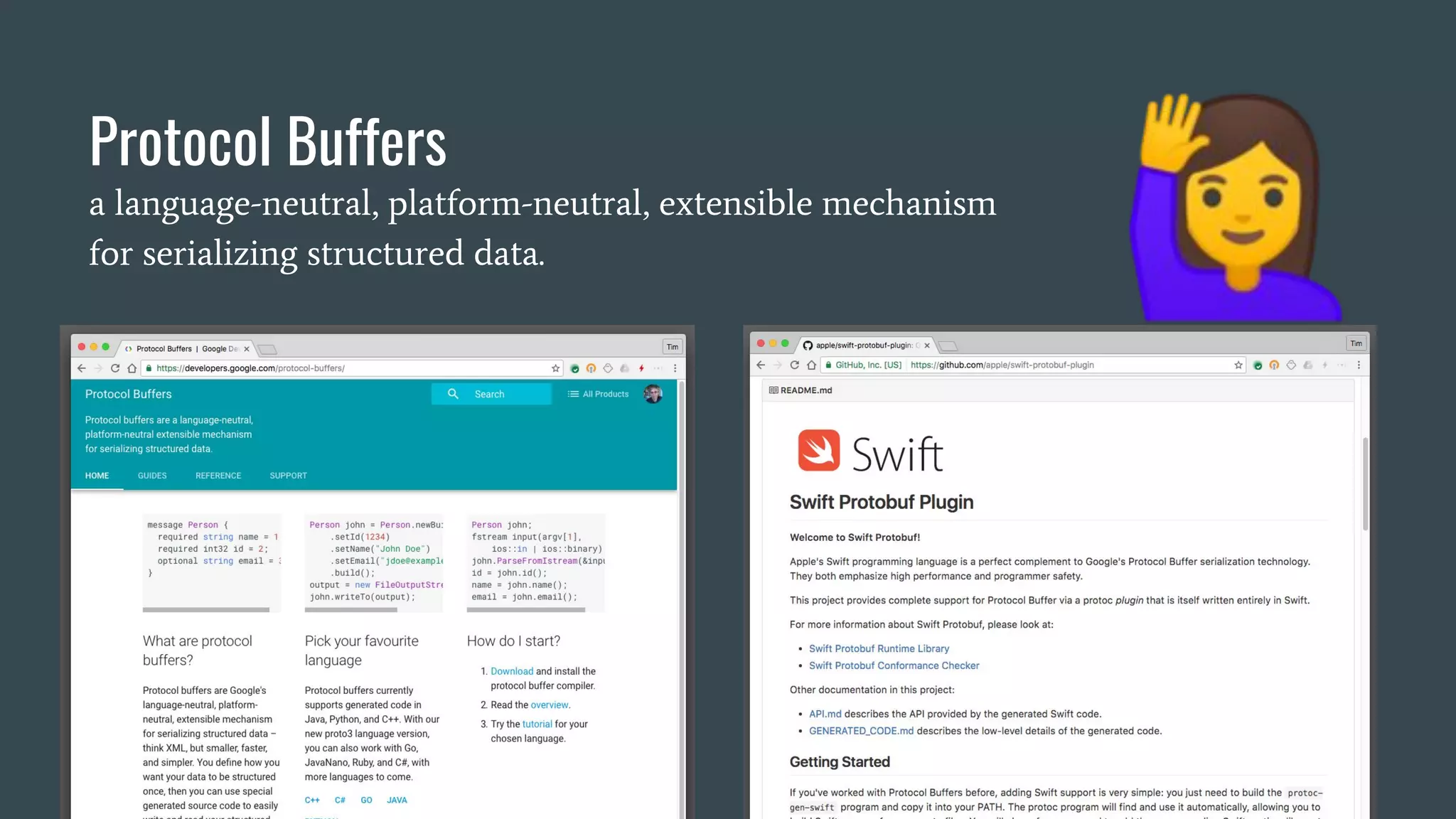
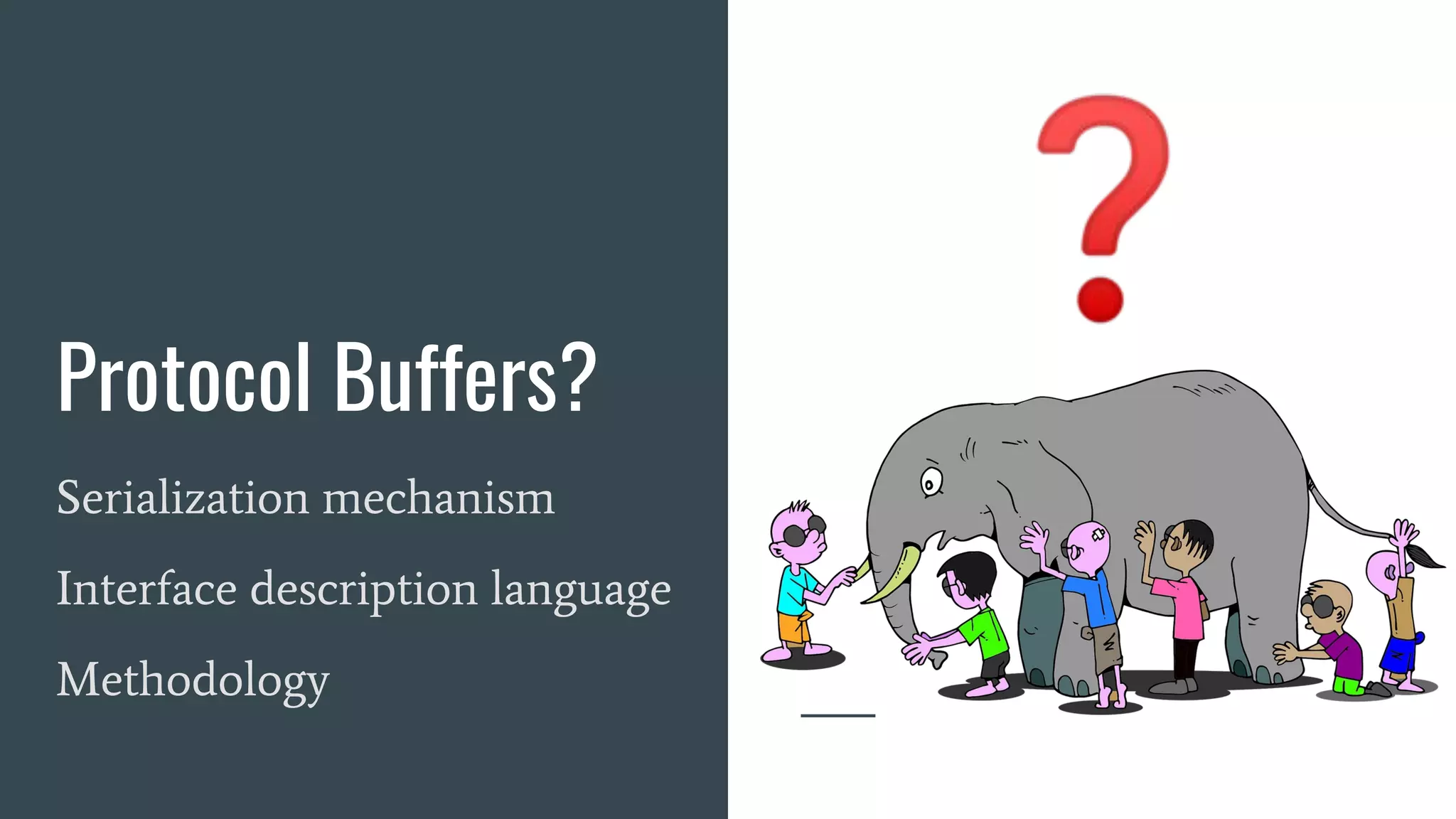
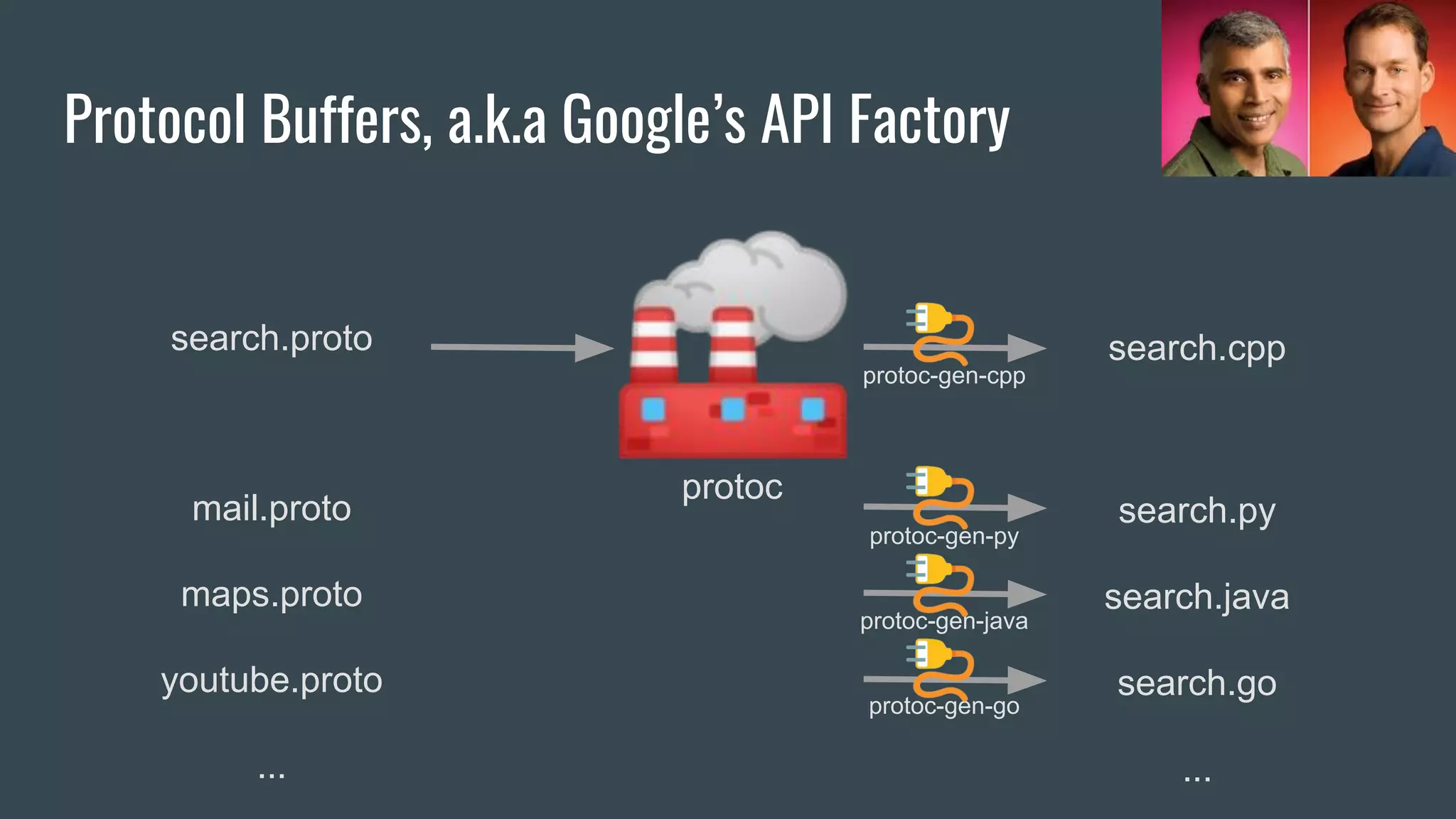

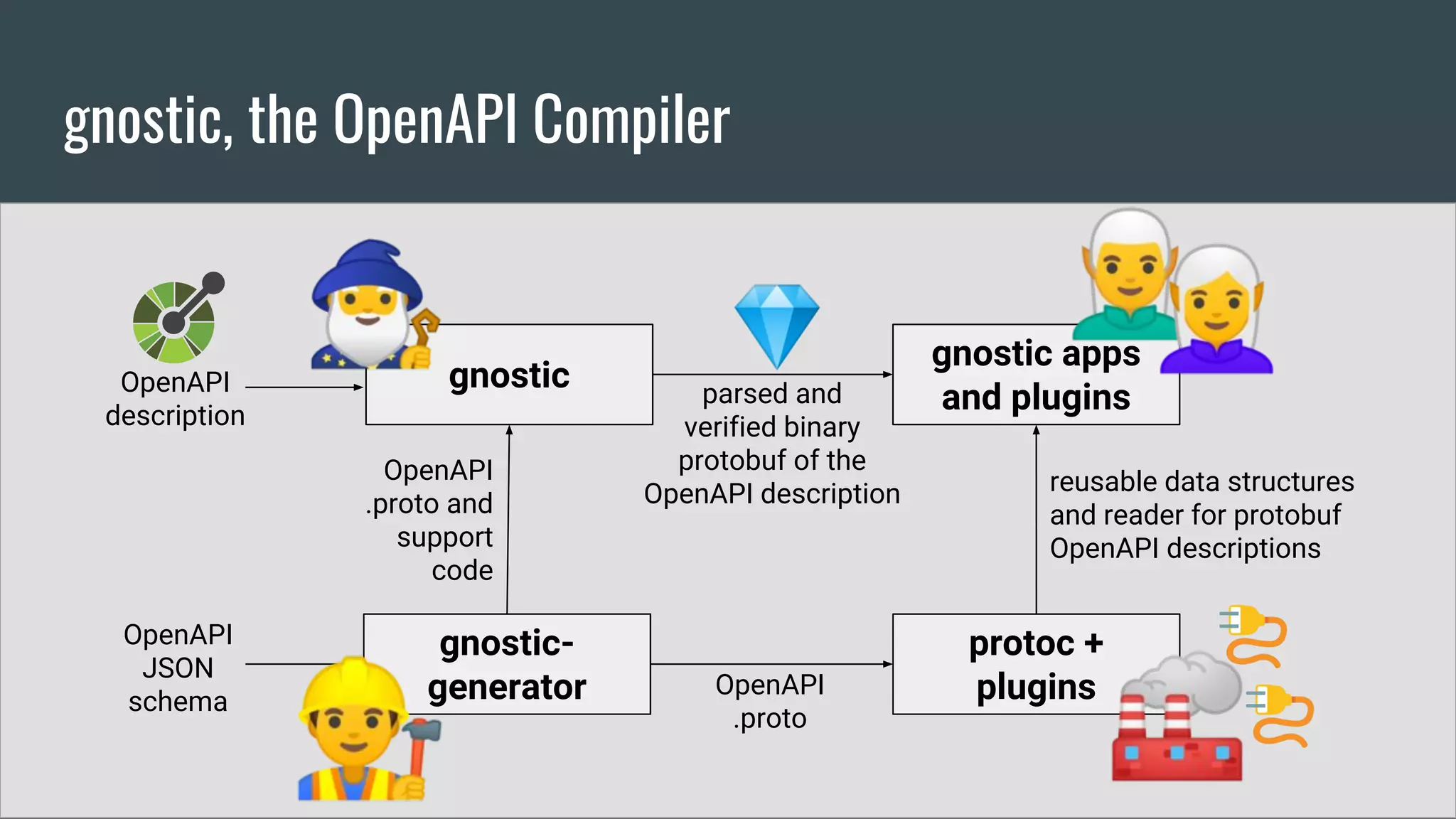
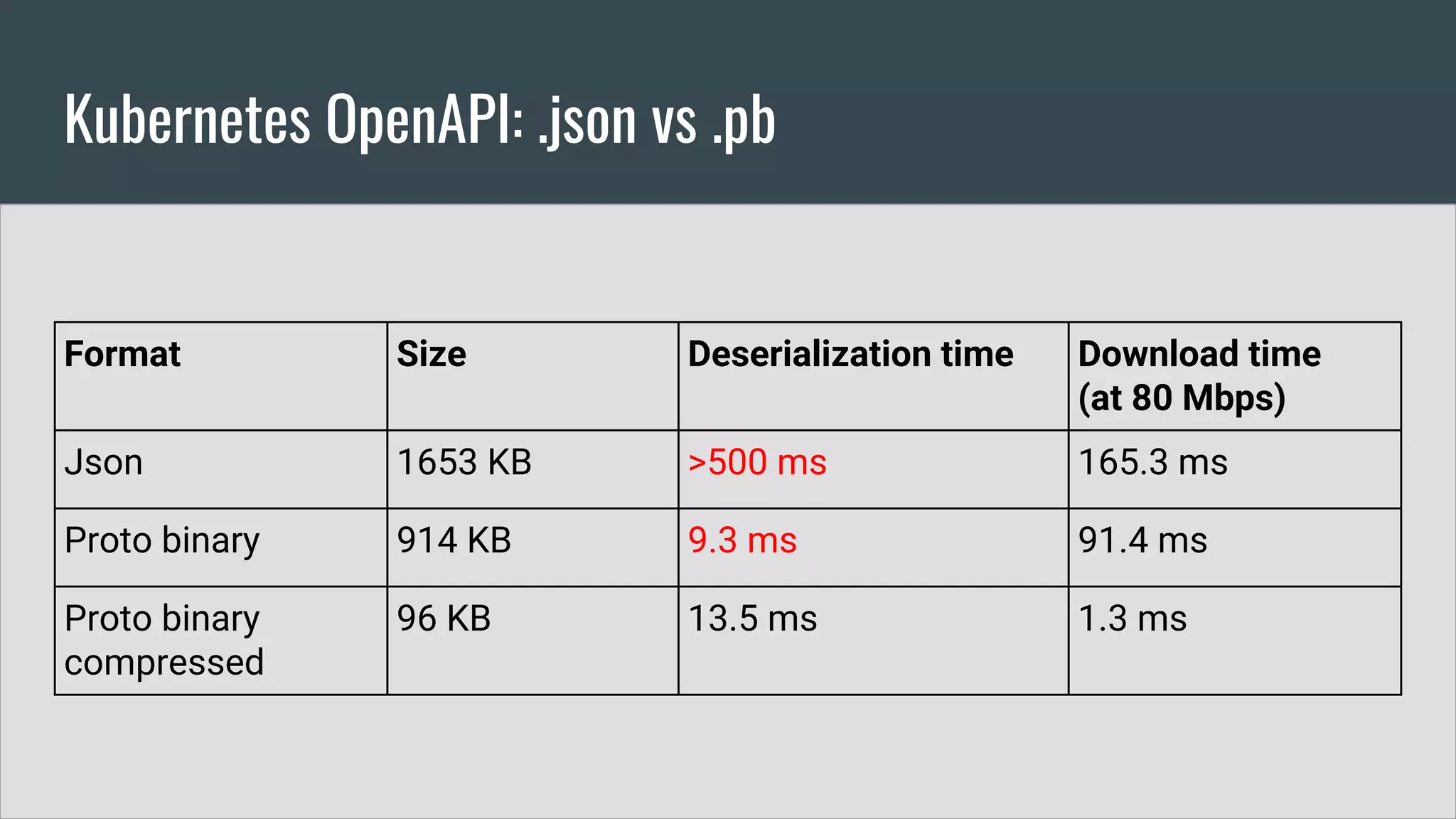
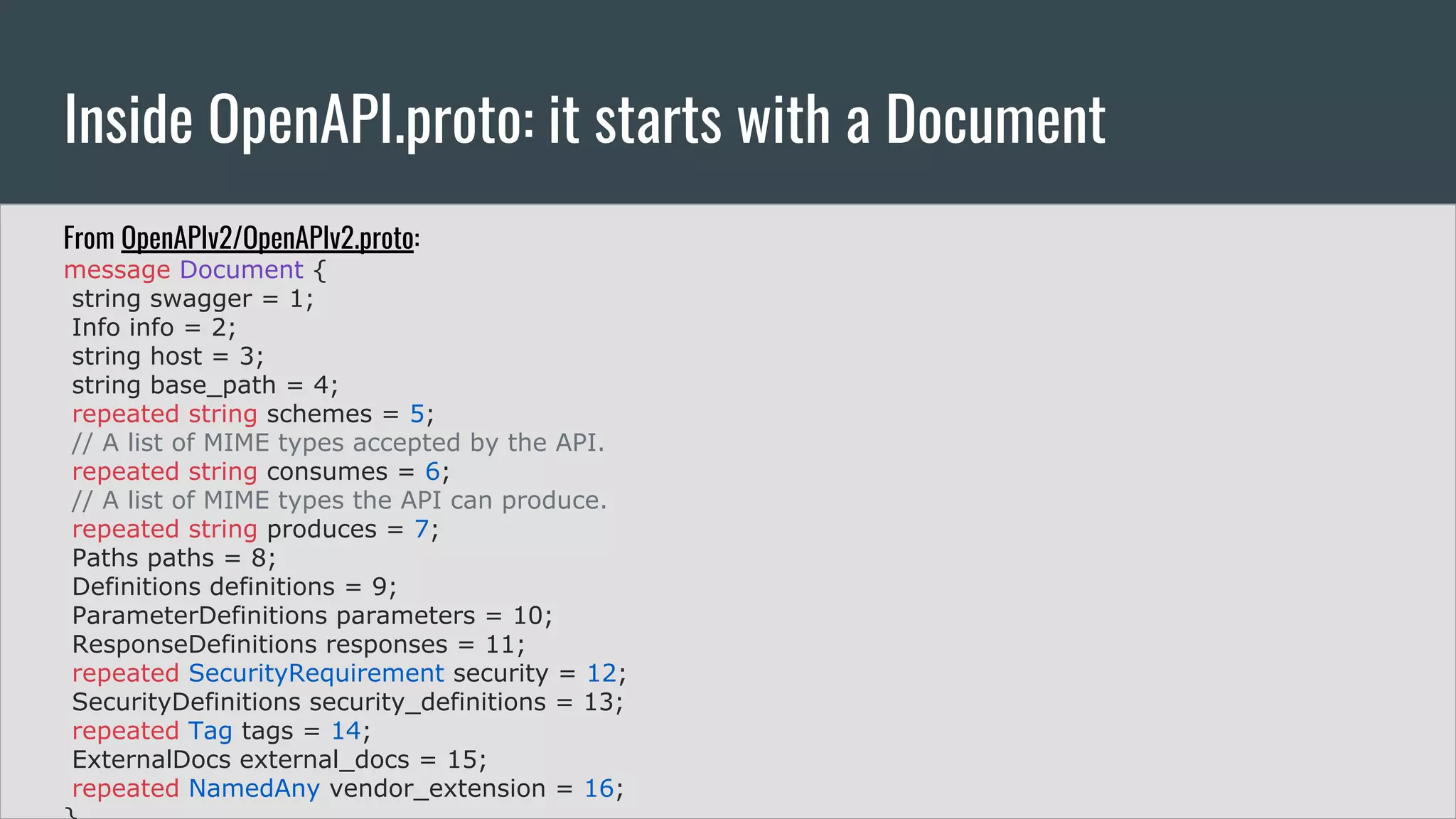
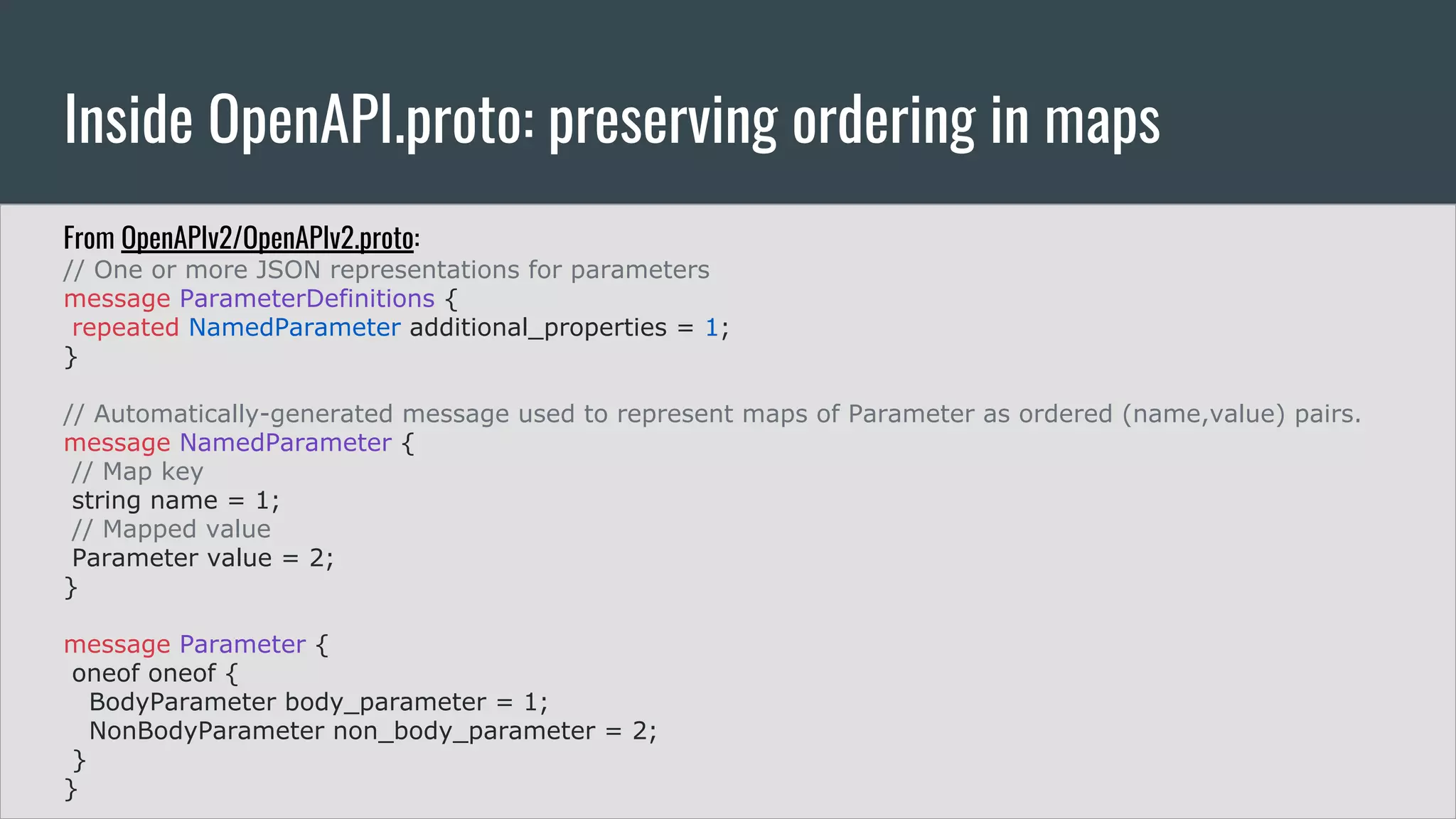
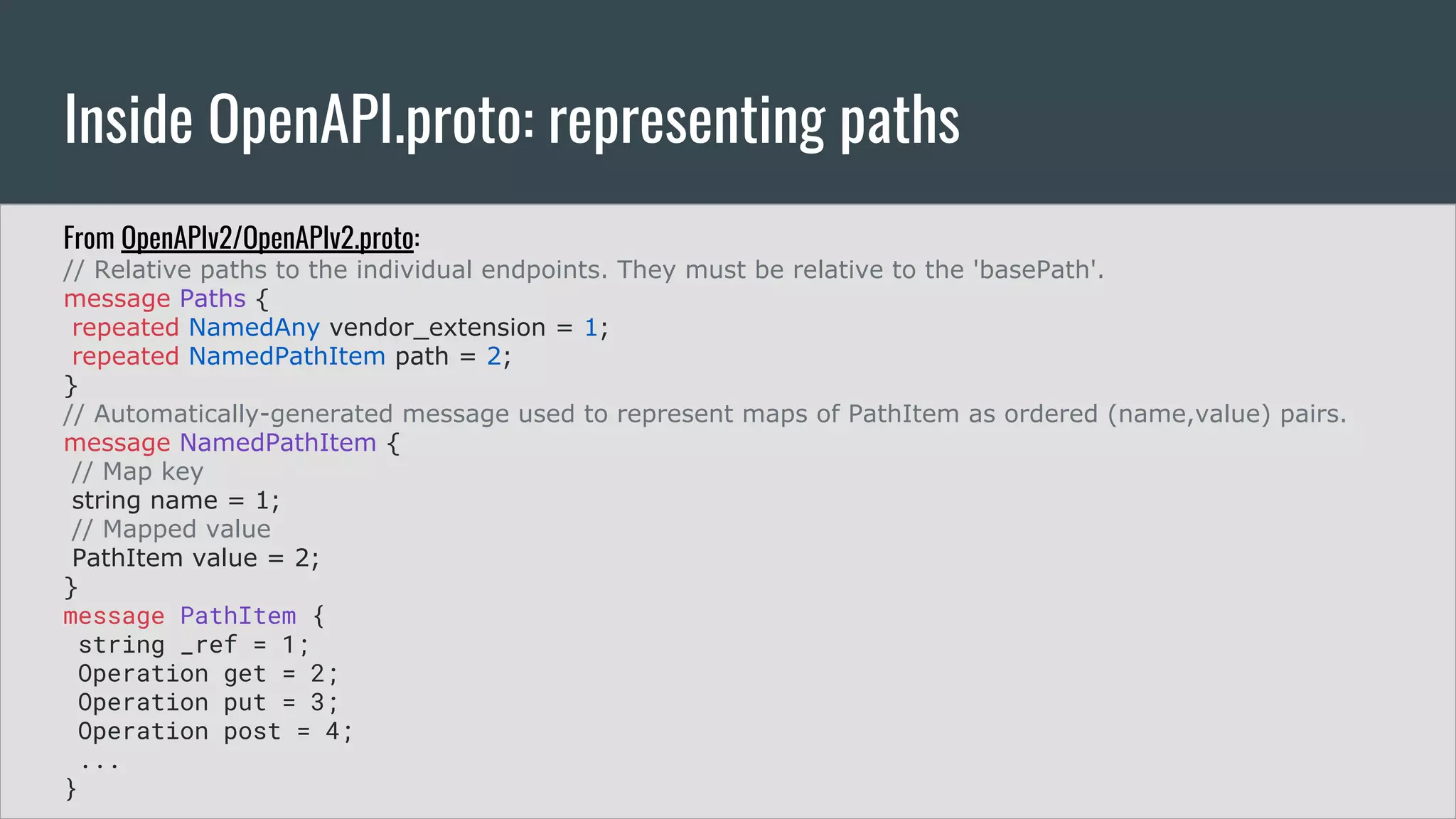
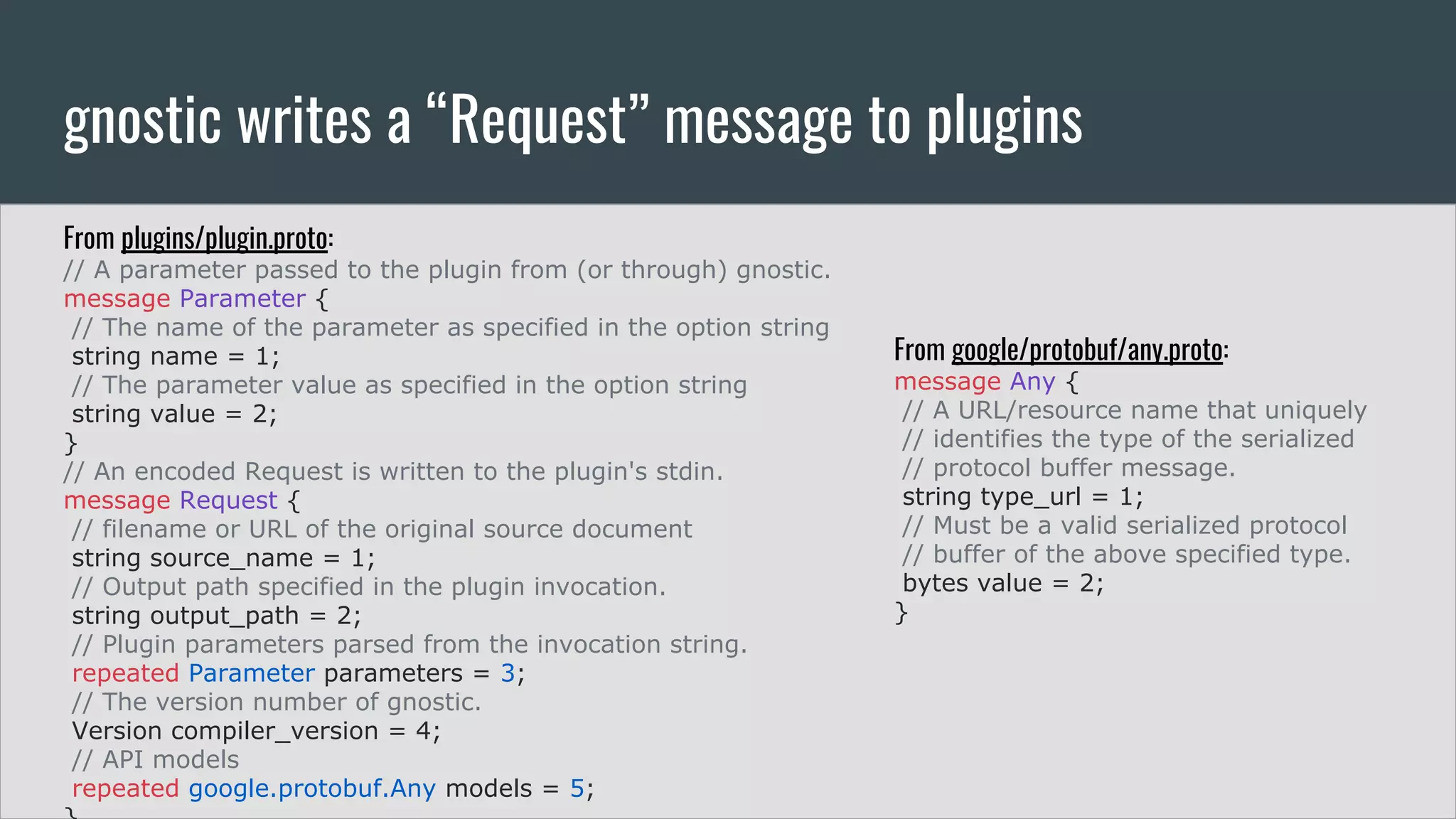



![Let’s run one. $ gnostic examples/v2.0/yaml/petstore.yaml --lint-responses level:ERROR code:"NO_ARRAY_RESPONSES" text:"Arrays MUST NOT be returned as the top-level structure in a response body." keys:"paths" keys:"/pets" keys:"get" keys:"responses" keys:"200" keys:"schema" level:ERROR code:"NO_ARRAY_RESPONSES" text:"Arrays MUST NOT be returned as the top-level structure in a response body." keys:"paths" keys:"/pets/{petId}" keys:"get" keys:"responses" keys:"200" keys:"schema" $ gnostic examples/v2.0/yaml/petstore.yaml --lint-responses --messages-out=. $ report-messages petstore.messages.pb ERROR NO_ARRAY_RESPONSES Arrays MUST NOT be returned as the top-level structure in a response body. [paths /pets get responses 200 schema] ERROR NO_ARRAY_RESPONSES Arrays MUST NOT be returned as the top-level structure in a response body. [paths /pets/{petId} get responses 200 schema]](https://image.slidesharecdn.com/index2018-02221030-enforcingapidesignrules-180226020748/75/Enforcing-API-Design-Rules-for-High-Quality-Code-Generation-35-2048.jpg)
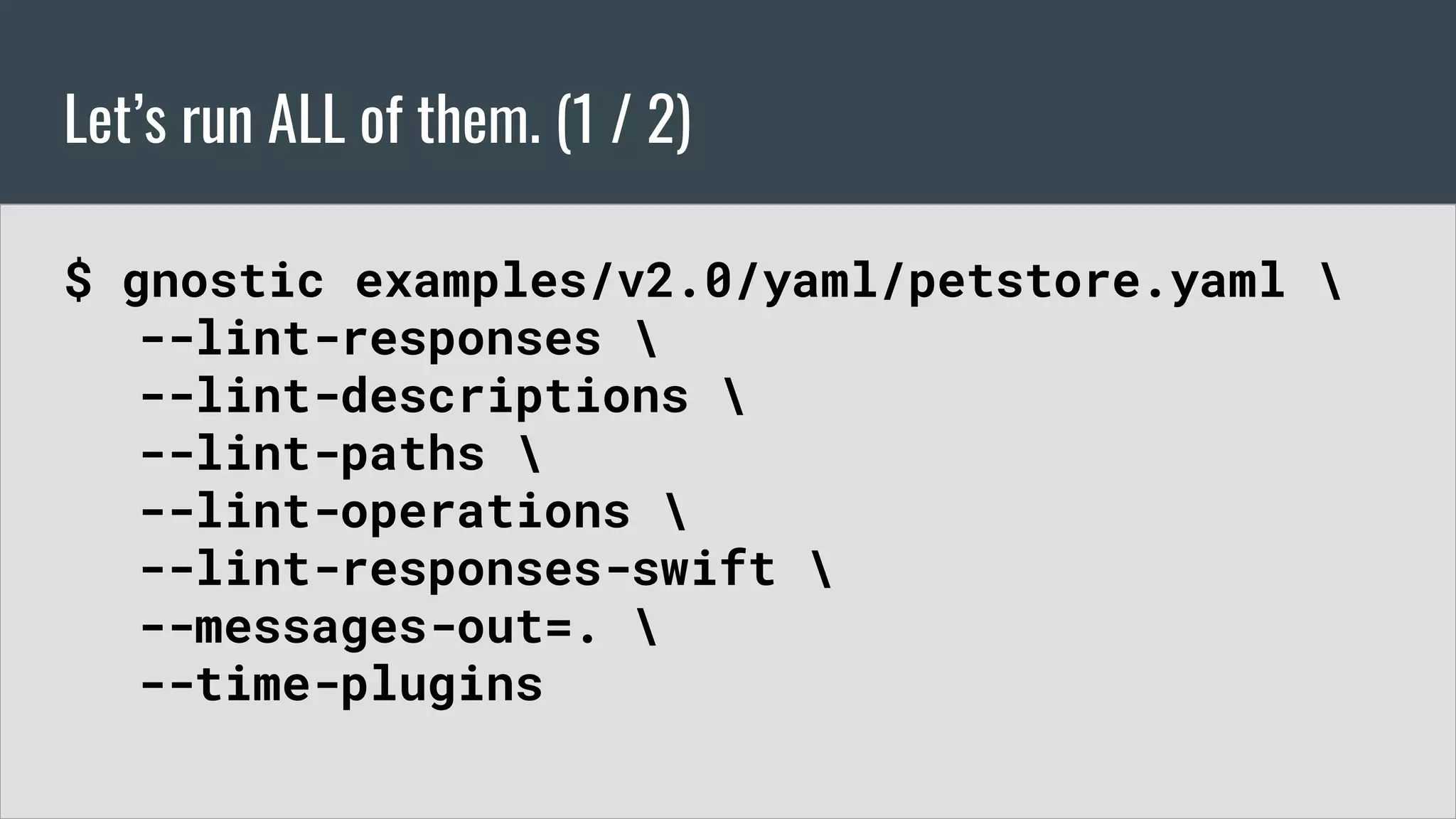
![Let’s run ALL of them. (2 / 2) $ report-messages petstore.messages.pb ERROR NO_ARRAY_RESPONSES Arrays MUST NOT be returned as the top-level structure in a response body. [paths ... ERROR NO_ARRAY_RESPONSES Arrays MUST NOT be returned as the top-level structure in a response body. [paths ... WARNING NODESCRIPTION Operation has no description. [paths /pets get] WARNING NODESCRIPTION Response has no description. [paths /pets get responses 200] WARNING NODESCRIPTION Response has no description. [paths /pets get responses default] WARNING NODESCRIPTION Operation has no description. [paths /pets post] WARNING NODESCRIPTION Response has no description. [paths /pets post responses default] WARNING NODESCRIPTION Operation has no description. [paths /pets/{petId} get] WARNING NODESCRIPTION Response has no description. [paths /pets/{petId} get responses 200] WARNING NODESCRIPTION Response has no description. [paths /pets/{petId} get responses default] WARNING NODESCRIPTION Definition has no description. [definitions Pet] WARNING NODESCRIPTION Property has no description. [definitions Pet properties id] WARNING NODESCRIPTION Property has no description. [definitions Pet properties name] WARNING NODESCRIPTION Property has no description. [definitions Pet properties tag] WARNING NODESCRIPTION Definition has no description. [definitions Pets] WARNING NODESCRIPTION Definition has no description. [definitions Error] WARNING NODESCRIPTION Property has no description. [definitions Error properties code] WARNING NODESCRIPTION Property has no description. [definitions Error properties message] INFO PATH /pets [paths /pets] INFO PATH /pets/{petId} [paths /pets/{petId}] ERROR NO_ARRAY_RESPONSES Arrays MUST NOT be returned as the top-level structure in a response body. [paths ... ERROR NO_ARRAY_RESPONSES Arrays MUST NOT be returned as the top-level structure in a response body. [paths ...](https://image.slidesharecdn.com/index2018-02221030-enforcingapidesignrules-180226020748/75/Enforcing-API-Design-Rules-for-High-Quality-Code-Generation-37-2048.jpg)

